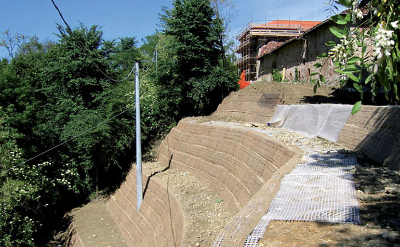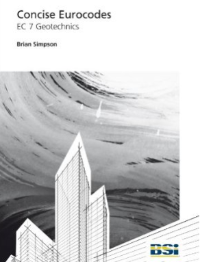
In December 2004, Eurocode 7: Geotechnical Design – Part 1: General Rules (EC 7-1) was ratified by the European member states. This prompted a two-year calibration period, during which member states had to write the National Annex to EC 7-1 that serves as the link between EC 7-1 and national standards.
Following this calibration period, a three-year coexistence period took place, culminating in EC 7-1 becoming valid in all member states around 2009. National standards covering the same items as EC 7-1 then had to be withdrawn.
It will be mandatory for all member States to accept designs to the EN Eurocodes. Therefore, EN Eurocodes will become the standard technical specification for all public works contracts.
It will not be mandatory to design to the EN Eurocodes in a particular member state, but a designer proposing to use an alternative design standard will have to demonstrate that the alternative is technically equivalent to an EN Eurocode solution.
For the design of Geosynthetic Reinforced Soil Structures, the 2010 issue of e.g. EBGEO (Germany) and BS8006 (UK) are referenced in the National Annex of the respective member states as their decisive guideline for the design of the geosynthetic components.
The new EC 7-1 moves away from “Working Stresses and a Global Safety Factor as calculation result” to a Limit State Design approach, which uses partial safety factors for actions (loads), material (soil) and resistances to finally show an equilibrium between actions vs. resistances.
This article on Eurocode 7 and geosynthetics was published first in NAUE News #37. Access the NAUE News archive and sign up to receive the publication for free. For more information, contact info@naue.com.
RELATED PUBLICATION
 The British Standards Institute (BSI) has just published Brian Simpson’s book Concise Eurocodes: Geotechnics: BS EN 1997: Eurocodes 7. Structural Eurocodes are a suite of design codes which will harmonize technical specifications for building and civil engineering works across Europe. Their introduction in March 2010 required the withdrawal of more than 50 British Standards. The change has been described as “the single most important change to construction standards ever.” Eurocode 7 (Geotechnics) includes information on the utilization of geosynthetics. Simpson’s book serves as a transition support primer for consulting engineers on Eurocode 7 design updates.
The British Standards Institute (BSI) has just published Brian Simpson’s book Concise Eurocodes: Geotechnics: BS EN 1997: Eurocodes 7. Structural Eurocodes are a suite of design codes which will harmonize technical specifications for building and civil engineering works across Europe. Their introduction in March 2010 required the withdrawal of more than 50 British Standards. The change has been described as “the single most important change to construction standards ever.” Eurocode 7 (Geotechnics) includes information on the utilization of geosynthetics. Simpson’s book serves as a transition support primer for consulting engineers on Eurocode 7 design updates.











